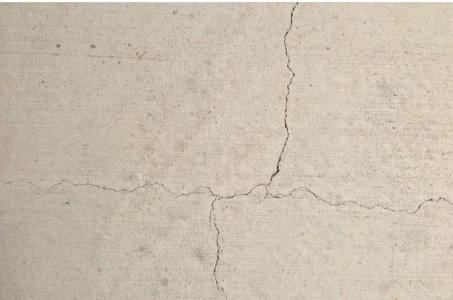Diving into Water Leakage Woes: Understanding Different Types of Problems
Table of Contents
- Different Types of Water Leakage Problems
- What is Cracked Plaster?
- Causes of Cracked Plaster
- How to Identify Serious Plaster Cracks
- What is Paint Chalking?
- How to Identify Paint Chalking
- Causes of Chalking
- What are Wall Cracks?
- Causes of Wall Cracks
- How Can Wall Cracks Be Detected?
- What is Water Leakage in the Walls?
- Cause of Water Leakage
- How to Identify Water Leakage Problem
- What is Blistering Paint On Walls?
- Causes for Paint Blisters
- How to Identify the Cause of Paint Bubbles or Blisters?
- What is Water Seepage?
- Causes of Water Seepage
- How can the Water Seepage be Detected?
- What is Dampness in Walls?
- Causes of Dampness
- How to find out the possible cause of dampness?
- What is Flaking Off Paint?
- Causes of Flaking Off Paint
- How to Spot a Flaking Paint Problem?
- What are Hairline Cracks On Walls?
- Causes for Hairline Cracks
- How to Identify Hairline Cracks on Walls?
How to identify Different types of water leakage problems in the house?
The problem of water seepage can usually be seen due to cracks in the walls or roofs of the houses. Hairline cracks in walls are not a cause for concern in most cases. However, ignoring minor cracks can lead to problems like dampness, fungus, mold, and weakening of the foundation in the future.
In older homes, changes in temperature and changes in humidity levels cause the building structure to shrink and expand over time, which can lead to cracks in the walls.
Newly plastered walls undergo the process of plaster shrinkage when dry which often leads to hairline cracks. Additionally, cracks in houses built along a busy road can be caused by road traffic vibrations.
Timber window frames, if made of UPVC double glazing and not fitted with supporting lintels, may be prone to cracks around the window.
Due to all the above reasons, the possibility of water leakage problems in the building increases. Let us see the information about the problem of different types of water leakage.
Different Types of Water Leakage Problems
Cracked Plaster

-
What is Cracked Plaster?
It is normal for cracks to occur in plaster due to the shrinkage of lime and cement mixed in the plaster material of the building structure. These cracks are usually less than 15 millimeters wide, which can be fixed by filling them with filler material such as putty during the painting process.
Causes of Cracked Plaster
- When a newly built house settles on its foundation, there may be a possibility of cracks due to bearing movements.
- Lack of water spraying in newly plastered walls may lead to cracking after drying.
- Cracked plaster can be caused by water seepage through cracks in the structure of the house or a break in the water supply pipe.
- Being home near a busy road, the effect of vibration from heavy traffic can lead to cracked plaster.
- Subsidence in the foundation of the house due to waterlogging can cause cracks in the plaster of the building structure.
How to Identify Serious Plaster Cracks
Plaster crack more than 5 mm wide The cause of plaster crack can be serious. This type of plaster crack can be due to structural defects of building construction or earthquakes.
Paint Chalking

-
What is Chalking?
Paint chalking is the build-up of a chalky powder-like substance on the surface of painted walls.
-
How to Identify Paint Chalking
The appearance of a loosely powdery substance on the surface of a paint film is a sign of paint chalking.
-
Causes of Chalking
The main reason for the cracking of paint is the exposure of exterior walls to sunlight. UV rays degrade the binder within the paint film. Over time the exposed pigment particles loosen and form a powdery substance on the surface of the paint film.
Additionally, the reaction of the paint binder with the oxygen present in the atmosphere results in the separation of the pigments and binder mixed in the paint, causing the paint to flake off as a powder from the wall.
Wall Cracks

-
What are Wall Cracks?
The occurrence of vertical, horizontal or oblique cracks over a long distance on the surface of a wall is called cracking of the wall.
Causes of Wall Cracks
- Cracks may appear when settling in the foundation of a new building.
- Older buildings may develop cracks over time due to earthquakes or water logging around the ground floor.
- Shrinkage due to loss of moisture in the drying process of plaster walls leads to cracks.
- Cracks start appearing in the walls due to dampness in any part of the building.
- Due to the improper slope of the concrete slab on the roof, the problem of water stagnation arises in the rainy season. If ignored, cracks occur in the roof.
- If there is a huge tree attached to the walls around the building or inside the house, then the problem of wall cracks can be caused by its roots spreading inside the ground.
- Wall cracks can also occur due to earthquakes.
- Buildings on the side of a busy road may also be prone to wall cracking due to vibrations from passing heavy traffic vehicles.
How Can Wall Cracks Be Detected?
Method for testing different types of serious wall cracks in building structures:
- Inspection check
- Dye Penetration exam
- Cracks inside the building can be traced using Eddy's current testing techniques.
- Thermographic Test (TT)
- Magnetic Particle Test (Magnetic Particle Test)
- Ultrasonic Testing (UT)
Water Leakage in the Walls

What is Water Leakage in the Walls?
If moisture and dampness persist on the surface of the walls and there is a smell of dampness and mold inside the house, then this type of problem can be a sign of water leakage in the walls.
Causes of Water Leakage
- Lack of proper drainage system of the building.
- Continuous leaking of water from bathroom or kitchen tap.
- Defect in the water supply pipeline.
- Due to prolonged neglect of micro-cracks in the walls, the formation of serious cracks.
- Water seepage in walls due to prolonged water accumulation around the walls of the ground floor.
How to Identify Water Leakage Problem
If the following problems persist in the building, then there may be a possibility of water leakage in the walls:
- If there is a fungus and dampness smell when entering a house that has been closed for a long time, this type of problem can be a sign of water leakage in the walls.
- Improper drainage on the roof or any part of the house.
- Defective pipeline i.e. water supply pipe joint fracture.
- Dampness in the floor inside the building.
- Cracks in the walls.
- The paint of the ceiling of the building is getting discolored.
- Mold in the walls.
Blistering Paint

What is Blistering Paint On Walls?
Paint blisters appear on the surface of the walls when the adhesion between the wall surface and the paint film is damaged. Loss of adhesion between the paint film and the surface is usually caused by heat, moisture, or a combination of the two. This condition is called paint blistering.
Causes Paint Blisters
- Application of oil-based paint without stripping the latex paint from the surface of the walls.
- Painting on a damp, dirty, or hot wall surface.
- exposure of latex paint to moisture soon after the paint has dried.
How to Identify the Cause of Paint Bubbles or Blisters?
- Determine whether the blisters were caused by heat or moisture.
- Break open and examine the substrate and backing of the chipped paint.
- Check the inner layer by breaking the paint bubble. If only the top layer of paint bubbles, it may be caused by painting on a hot surface.
- If paint bubbles occur in multiple layers, the blisters may have been caused by painting on a damp surface.
Water Seepage

-
What is Water Seepage?
Water seepage is the problem of water seepage in one wall/roof or all the walls of the building due to the presence of small holes, any break in the structure of the building, or the flow of water from one place to another due to porous material.
Causes of Water Seepage
- Poor quality of the plaster material on the exterior of the house.
- Defective drainage system.
- Leakage in plumbing.
- Use of poor waterproofing material.
- Cracks in the outer walls of the building.
How can the Water Seepage be Detected?
- Watermarks on the interior walls of the house could be a sign of water leakage.
- Check for cracks in the walls, holes in the water tank, cracks in water pipelines, or water leakage in old pipelines.
- Even if there is a gap between the walls of your house and the next house, water seepage is possible in the wall.
- Get the contractor or your builder to check the quality of the plaster material of the exterior walls of the house. Because the reason for water leakage in the walls can also be the use of low-quality plaster material for house construction.
Dampness in Walls

-
What is Dampness in Walls?
Water contained in the air condensed in cold surfaces like interior walls raises the problem of dampness in buildings.
Causes of Dampness
- Cracks in the walls
- Burst gutters and pipes
- Porous bricks
- Improperly setting of washing machine drainage.
How to find out the possible cause of dampness?
- The severity level of dampness can be checked with the help of a damp meter.
- Watermarks due to dampness in the lower parts of the walls, falling of plaster can be a problem of dampness due to water seepage from the floor.
- Rotting of wooden frames of window doors attached to walls, and watermarks on masonry walls also indicate the possibility of dampness in the building.
Flaking off Paint

-
What is Flaking Off Paint?
The peeling of dried paint from the wall surface is called paint flaking.
Causes of Flaking Off Paint
- Due to moisture or water settling under the dried paint of the walls, the paint starts peeling off from the surface.
- During the painting process on the walls, the surface needs to be cleaned properly before applying the primer.
- Coating of water-based (latex) paint over oil-based paint.
- Repeated coating of paint on the walls without removing the old paint layer present on the walls.
How to Spot a Flaking Paint Problem?
The appearance of hairline cracks in dried wall paint or holes in the surface of the colour or large chunks of paint peeling off on its own can be a sign of paint flaking.
Hairline Cracks

-
What are Hairline Cracks On Walls?
Spider web-like cracks seen in the paint layer of the walls are called hairline cracks.
Causes for Hairline Cracks
- In new building cases, hairline cracks may be the result of the building undergoing a settling process.
- Hairline cracks on walls around door and window frames can be the result of the frame anchoring in the wall.
- Hairline cracks can occur as a result of shrinkage and expansion of the plaster material due to fluctuations in temperature and humidity levels.
- When installing drywall panels, the gaps between the panels are covered with paper tape after being filled with drywall mud. In the event that there is not enough soil under the tape to adhere firmly, it may begin to pull away from the wall over time, causing hairline cracks in the wall.
- Earthquakes can also cause hairline cracks in walls.
How to Identify Hairline Cracks on Walls?
Spider web-like cracks less than 5 mm wide on the surface of the walls indicate hairline cracks. Such cracks can only be cured by caulking and painting.
09-Aug-2023
1,283 View(s)
Upto 25% OFF On Home Painting!
* Share details for Free Online-Quotation
11714 Home Painted
4.8
ONE year service warranty




